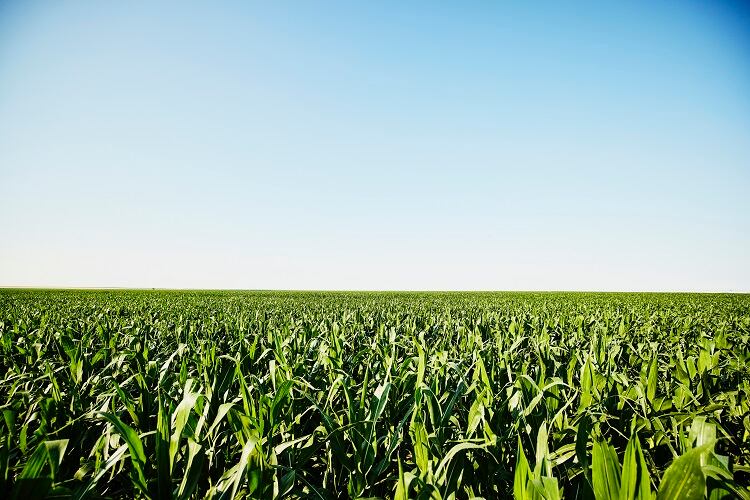New research on maize and buckwheat suggest solutions which could help this happen. From changing buckwheat genes to utilizing chemicals secreted by maize, these innovations could significantly aid the mitigation of hunger in the future.
Maize’s microorganism-transforming chemicals
A study into chemicals secreted by maize crops during their growth could lead to an increased yield in wheat crops.
The study, conducted by researchers from the University of Bern, Switzerland, found that chemicals called benzoxazinoids, which are released from the roots of maize crops, can change the composition of microorganisms in the earth.
The present experiment showed that these can, under specific conditions, increase the yield of what is grown nearby. The experiment tested under which conditions this is so, as the results can be highly variable.
The experiment, which took place over two years, involved growing one line of maize that released benzoxazinoids and one that didn’t. Following this, three varieties of winter wheat were grown in these different conditions of soils.
The experiment showed that benzoxazinoids can improve wheat yield by 4%. The quality of the wheat grown was analysed, and it was no worse than wheat not grown in this way.
There were additional benefits as well, such as an observed decreased in the number of pests present.
“A yield increase of 4% may not sound spectacular, but it is still significant considering how challenging it has become to enhance wheat yields without additional inputs,” said Matthias Erb, Professor for Biotic Interactions at the Institute of Plant Sciences and leader of the study.
“Whether effects of this kind actually make a significant difference for overall agricultural productivity and sustainability remains to be seen, however, as yield also depends on many other factors.”
More investigation is needed, researchers said.
Buckwheat gene mutations
Buckwheat is another crop that could play an important role in food security. Although unlike maize and wheat, buckwheat - considered an orphan crop - is not traded internationally.
New research, which was published in Nature Plants, has deciphered buckwheat’s high-precision chromosomal-level genome sequence. Being able to decipher genome sequences in this way may lead to more efficient breeding in future.
The discovery has allowed them to alter specific genes of buckwheat, independently of common genome editing techniques. With their new method of gene editing, a wider variety of orphan crops could become available than that possible with traditional methods.
Through this, they have engineered a new, self-fertile variety of buckwheat, alongside a new form of the crop which has a sticky texture. The buckwheat could be helpful in the fight against world hunger – because increasing dependence on common crops such as wheat, corn and rice will be strained by the world’s population growth, orphan crops such as buckwheat could provide an alternative.
Sourced From: eLife
'Plant secondary metabolite-dependent plant-soil feedbacks can improve crop yield in the field'
Published on: 1 August 2023
Doi: https://doi.org/10.7554/eLife.84988
Authors: V. Gfeller, J. Waelchli, S. Pfister, G. Deslandes-Hérold, F. Mascher, G. Glauser, Y. Aeby, A. Mestrot, C. AM Robert, K. Schlaeppi, M. Erb
Sourced From: Nature Plants
'Genome sequencing reveals the genetic architecture of heterostyly and domestication history of common buckwheat’
Published on: 10 August 2023
Doi: https://doi.org/10.1038/s41477-023-01474-1
Authors: J. A. Fawcett, R. Takeshima, S. Kikuchi, E. Yazaki, T. Katsube-Tanaka, Y. Dong, M. Li, H. V. Hunt, M. K. Jones, D. L. Lister, T. Ohsako, E. Ogiso-Tanaka, K, Fujii, T. Hara, K. Matsui, N. Mizuno, K. Nishimura, T, Nakazaki, H. Saito, N. Takeuchi, M. Ueno, D. Matsumoto, M. Norizuki, K. Shirasawa, C. Li, H. Hirakawa, T. Ota & Y. Yasui




